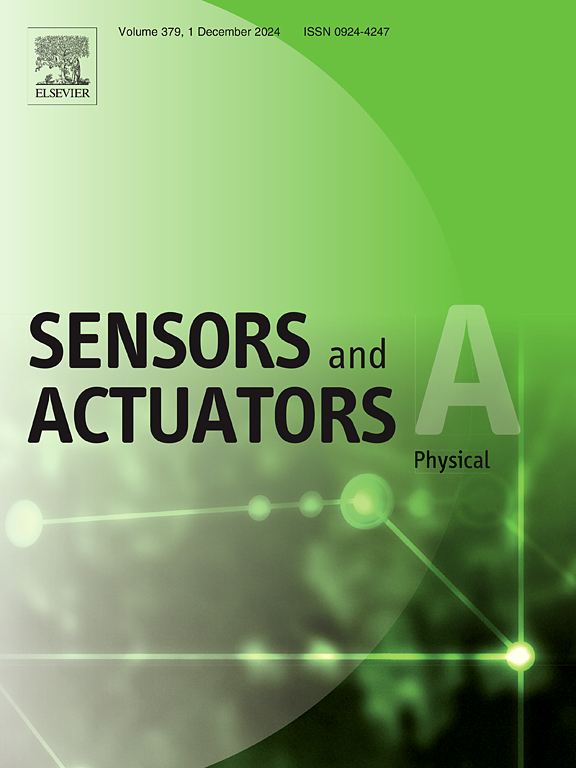Improved design of optical-microforce sensor with high thermal-mechanical stability for insulation charge ellipsometer testing application
IF 4.1
3区 工程技术
Q2 ENGINEERING, ELECTRICAL & ELECTRONIC
引用次数: 0
Abstract
Optical-microforce sensor is the core of the sensing module for the insulation charge ellipsometer testing, whose thermal-mechanical stability directly affects the charge measurement reliability. In this paper, based on molecular simulation, the improved design for SU-8 photoresist-based optical-microforce sensor is proposed. It is found that carboxyl-functionalized carbon nanotube/SU-8 photoresist composite system with 75 % cross-linking index possesses the comparatively better thermal-mechanical stability. Then, based on the photolithography process, modified and unmodified optical-microforce sensors are prepared. Meanwhile, the thermal-mechanical stability is evaluated from the experimental perspective. The experiment is consistent with the molecular simulation, showing that compared with the unmodified optical-microforce sensor with measurement fluctuation of 17.6 %, the modified sensor exhibits better thermal-mechanical stability, whose measurement fluctuation is only 5.3 % during the temperature range of 25–100 °C. Further, the optical-microforce sensor measurement performance evaluation platform is built. It is shown that the modified sensor could achieve the response to different frequency, different magnitude elastic wave and picosecond pulse width elastic wave, which could be applied in the insulation charge ellipsometer testing application.
用于绝缘电荷椭偏仪测试应用的高热机械稳定性光学微力传感器的改进设计
光微力传感器是绝缘电荷椭偏仪测试传感模块的核心,其热力学稳定性直接影响电荷测量的可靠性。本文基于分子模拟,提出了基于 SU-8 光刻胶的光微力传感器的改进设计方案。研究发现,交联指数为 75% 的羧基功能化碳纳米管/SU-8 光刻胶复合体系具有相对更好的热机械稳定性。然后,基于光刻工艺制备了改性和未改性光微力传感器。同时,从实验角度对其热机械稳定性进行了评估。实验结果与分子模拟结果一致,表明与测量波动率为 17.6% 的未改性光微力传感器相比,改性传感器具有更好的热机械稳定性,在 25-100 °C 的温度范围内测量波动率仅为 5.3%。此外,还建立了光学微力传感器测量性能评估平台。结果表明,改进后的传感器可实现对不同频率、不同幅度弹性波和皮秒脉宽弹性波的响应,可应用于绝缘电荷椭偏仪测试。
本文章由计算机程序翻译,如有差异,请以英文原文为准。
求助全文
约1分钟内获得全文
求助全文
来源期刊

Sensors and Actuators A-physical
工程技术-工程:电子与电气
CiteScore
8.10
自引率
6.50%
发文量
630
审稿时长
49 days
期刊介绍:
Sensors and Actuators A: Physical brings together multidisciplinary interests in one journal entirely devoted to disseminating information on all aspects of research and development of solid-state devices for transducing physical signals. Sensors and Actuators A: Physical regularly publishes original papers, letters to the Editors and from time to time invited review articles within the following device areas:
• Fundamentals and Physics, such as: classification of effects, physical effects, measurement theory, modelling of sensors, measurement standards, measurement errors, units and constants, time and frequency measurement. Modeling papers should bring new modeling techniques to the field and be supported by experimental results.
• Materials and their Processing, such as: piezoelectric materials, polymers, metal oxides, III-V and II-VI semiconductors, thick and thin films, optical glass fibres, amorphous, polycrystalline and monocrystalline silicon.
• Optoelectronic sensors, such as: photovoltaic diodes, photoconductors, photodiodes, phototransistors, positron-sensitive photodetectors, optoisolators, photodiode arrays, charge-coupled devices, light-emitting diodes, injection lasers and liquid-crystal displays.
• Mechanical sensors, such as: metallic, thin-film and semiconductor strain gauges, diffused silicon pressure sensors, silicon accelerometers, solid-state displacement transducers, piezo junction devices, piezoelectric field-effect transducers (PiFETs), tunnel-diode strain sensors, surface acoustic wave devices, silicon micromechanical switches, solid-state flow meters and electronic flow controllers.
Etc...
 求助内容:
求助内容: 应助结果提醒方式:
应助结果提醒方式:


